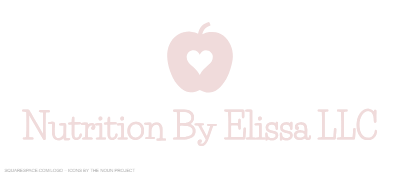Intuitive Eating (IE) is a tenable framework that builds on the intricate relationship between physical and emotional health. By using its ten principles as a guide, you can learn to remove the obstacles that prohibit you from meeting your biological and psychological needs. Below is an IE principle in bold and a beginner’s way to practice it in italics.
Diet culture penetrates our lives – there are so many books written that tout quick weight loss solutions. Each time you see a new, trendy diet emerge, reject the diet mentality.
Ignore the short-lived fad diets. Invest your time in learning about intuitive eating.
Honoring your hunger is necessary to meet your body’s biological needs. Denying yourself food now may lead to overeating later.
When your stomach grumbles, it’s telling you that you’re hungry! To replenish your energy demands, grab your favorite snack.
Give up the fight and make peace with food. Allow yourself to eat without restrictions to reduce negative attributes associated with food.
The next time you’re craving something, don’t deprive yourself of it.
It’s normal to categorize food as good vs. bad, but it can create unreasonable rules. Challenge the food police by quelling these contrived restrictions.
Write down the restrictions you place upon yourself when it comes to type and quantity of food. Think about where you heard about these rules and what purpose they really serve.
Realize the pleasures associated with eating, and how that pleasure engenders satisfaction. In time, focusing on the vicarious qualities will help you realize when you’ve had enough.
Keep a list of your favorite foods, and think: why do I love them and how much do I need to feel gratified?
Just like hunger signals, we have satiety signals. Acknowledge the ways in which you feel full.
Pause in the middle of a meal and assess the food’s taste and your current hunger level.
Food may temporarily ease uncomfortable feelings and emotions; however, it ultimately won’t solve them. It’s important to identify the sources of these emotions, and how emotional hunger may only make you feel worse in the long run. Thus, cope with your emotions with kindness.
When you’re feeling down, brainstorm the causes of these emotions through journaling. Rather than ignoring them, address the source or plan an activity to clear your mind.
Respecting your body is the first step to feeling better about yourself. Celebrate body diversity and reject unrealistic body size standards.
Every morning, name one quality you love about yourself. Ask a friend for suggestions if you have trouble.
The feelings derived from exercise are more sustainable than its calorie-burning effects. When you are moving, feel the difference.
Try a new form of movement and record the feelings you experience.
Gentle nutrition is the key to honoring your health. Eating well doesn’t have to be rigid. Overall dietary patterns reflect flexibility and balance in food choices.
Examine your grocery list: Is there variety in there? Pick foods that are diverse in color (orange vs. yellow) and kind (protein vs. whole grains).
